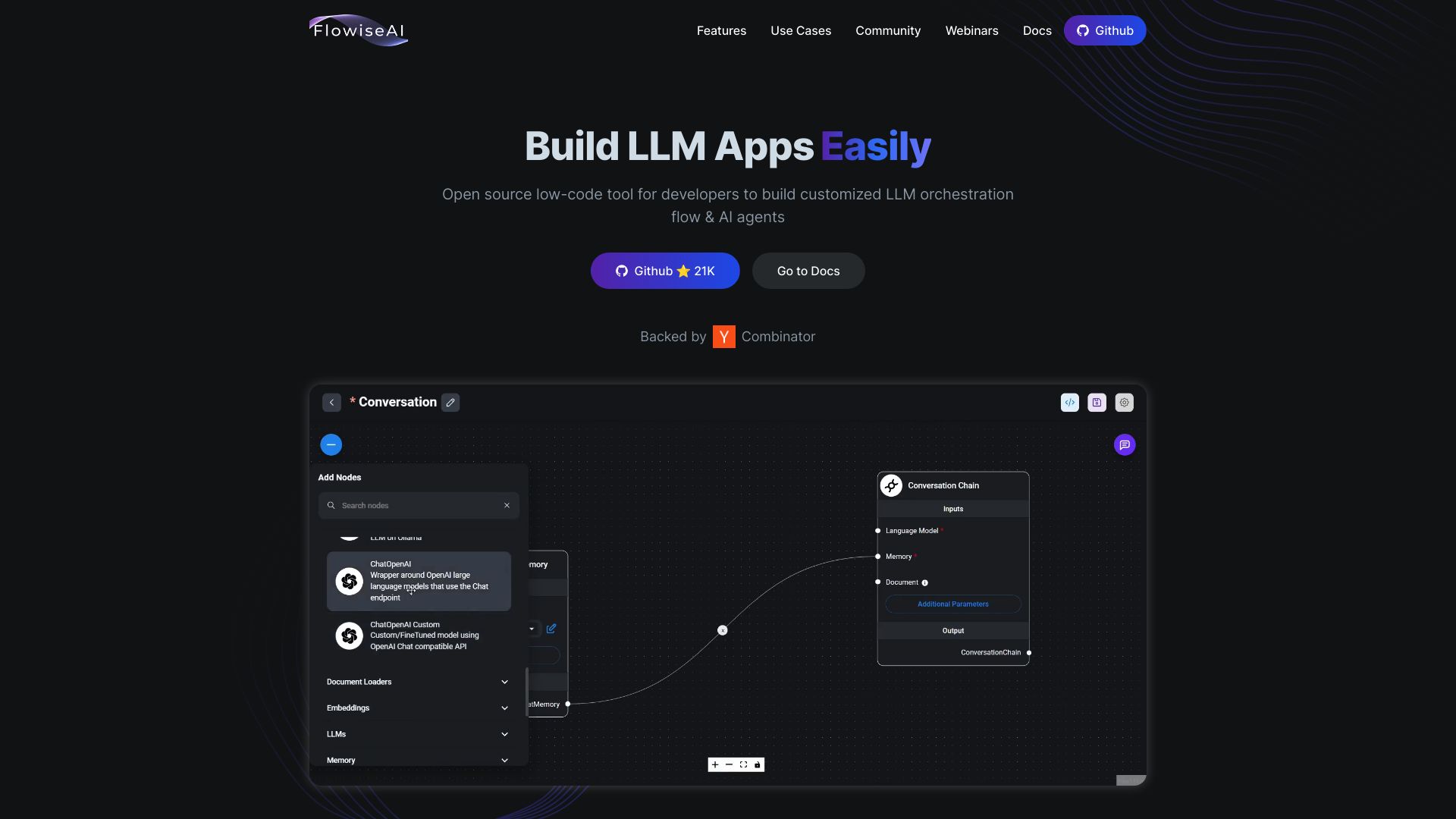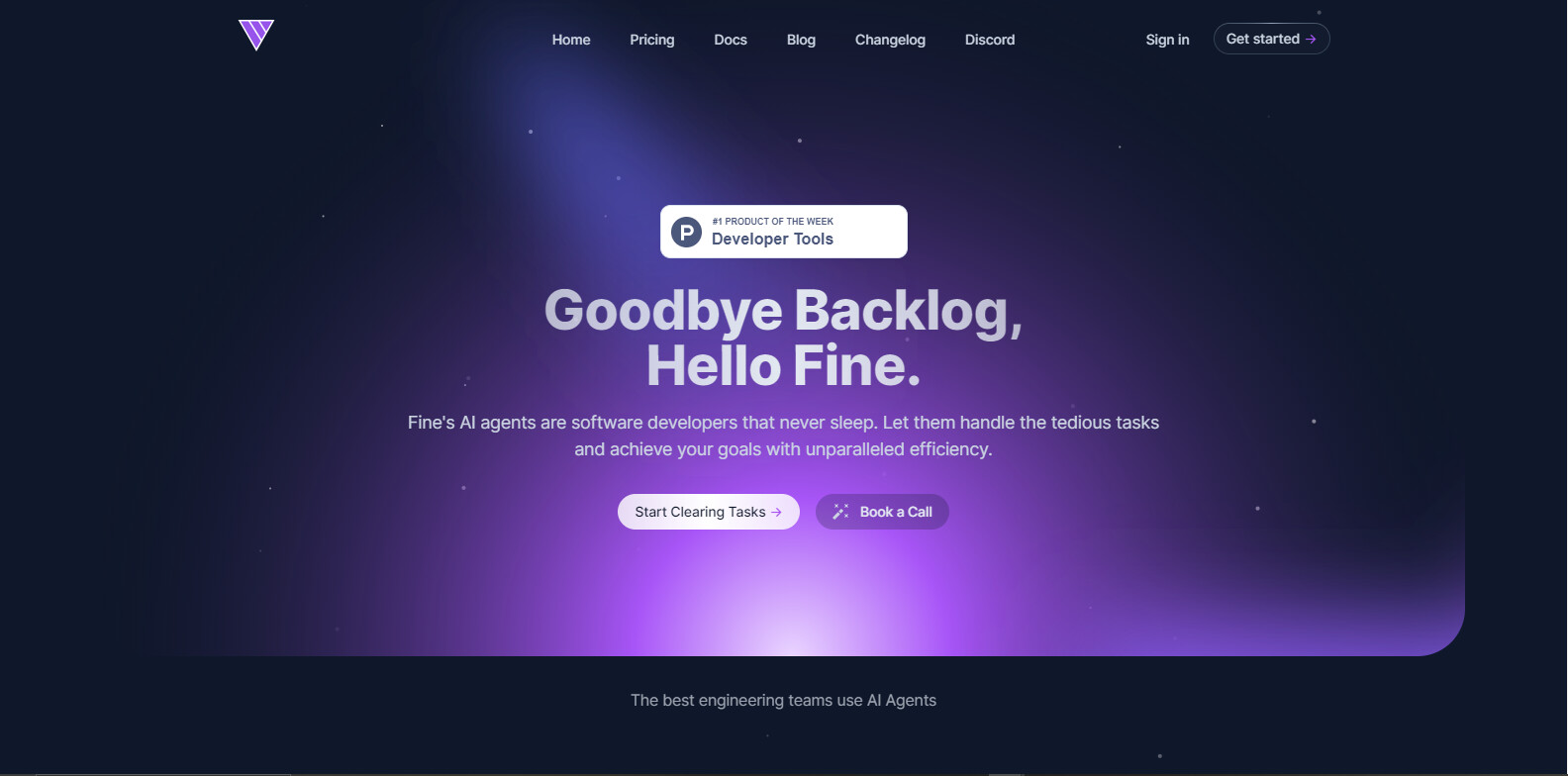FlowiseAI vs. Fine AI: Comparing AI Development Platforms
AI agent development platforms empower businesses to harness the power of artificial intelligence without extensive coding expertise. FlowiseAI vs. Fine AI stand out as powerful solutions, each offering unique approaches to streamline AI workflows. FlowiseAI excels in visual, low-code development for diverse AI applications, while Fine AI specializes in automating software development tasks. This comparison explores their key features, strengths, and limitations, revealing how SmythOS emerges as a comprehensive alternative. By examining deployment options, security measures, and integration capabilities, we uncover how these platforms address the evolving needs of developers, business leaders, and AI enthusiasts alike. Whether you’re building customer support chatbots, automating code generation, or seeking enterprise-grade AI solutions, this analysis will guide you in choosing the right platform for your AI development journey.
FlowiseAI Overview
FlowiseAI empowers developers to create custom AI agents and orchestrate large language model (LLM) workflows without extensive coding. This open-source platform combines a visual, drag-and-drop interface with powerful customization options, making AI development accessible to a wider audience.
FlowiseAI’s low-code approach accelerates the creation of sophisticated AI applications. Developers can rapidly prototype and deploy solutions for document analysis, customer support, and other use cases. The platform’s modular architecture allows users to connect various components like document loaders, text splitters, and LLMs to build complex AI workflows.
FlowiseAI empowers developers to create custom AI agents and orchestrate large language model (LLM) workflows without extensive coding.


Key features of FlowiseAI include integration with diverse data sources, support for multiple document types, and connectors for vector databases like Pinecone. The platform offers pre-built templates and tools to jumpstart development, while still allowing for extensive customization. This flexibility enables users to tailor AI agents to specific business needs and industry requirements.
While FlowiseAI offers significant advantages, it may present challenges for users seeking advanced multimodal capabilities or direct integration with certain third-party services. The open-source nature of the platform allows for community-driven improvements, but enterprise users should consider their specific requirements for support and scalability.
FlowiseAI positions itself as a versatile solution in the competitive landscape of AI development tools. Its focus on lowering the barrier to entry for AI creation aligns with the growing demand for accessible yet powerful AI platforms. As organizations across industries look to leverage AI, FlowiseAI provides a compelling option for those seeking to balance ease of use with robust customization capabilities.
Fine AI Overview
Fine AI transforms software development with AI-powered agents. The platform enables developers to create specialized agents for tasks like code generation, API management, and migrations. These agents interpret specifications and implement coherent changes across codebases, streamlining the development process.
Fine AI transforms software development with AI-powered agents… enabling developers to create specialized agents for tasks like code generation, API management, and migrations.


Fine AI’s visual builder and no-code editor empower users to craft AI workflows without extensive coding knowledge. The platform supports memory and context management, crucial for maintaining state in AI interactions. Developers can create autonomous agents that operate independently based on defined workflows, enhancing productivity.
Fine AI’s visual builder and no-code editor empower users to craft AI workflows without extensive coding knowledge.
The platform emphasizes collaboration, allowing teams to share and work together on AI projects. Fine AI integrates with foundational AI models and supports various APIs, enabling robust customization. It also provides debugging tools and audit logs for analytics, facilitating troubleshooting and performance monitoring.
While Fine AI offers impressive capabilities, it may have limitations in multimodal support and direct integration with certain tools like Zapier. The platform’s focus on developer-centric agents distinguishes it from general-purpose AI assistants, aiming to revolutionize the software development workflow by automating repetitive tasks and fostering human-AI collaboration.
Feature Comparison
FlowiseAI and Fine AI offer distinct approaches to AI agent development, each with its own strengths and limitations. FlowiseAI provides a robust visual builder and no-code editor, enabling users to create AI workflows without extensive coding knowledge. Its drag-and-drop interface simplifies the process of connecting various components like document loaders, text splitters, and language models. FlowiseAI also supports memory and context management, crucial for maintaining state in AI interactions.
Fine AI, on the other hand, focuses more on specialized agents for software development tasks. It excels in creating agents for code generation, API management, and migrations. Fine AI’s strength lies in its ability to interpret specifications and implement coherent changes across codebases. While both platforms support autonomous agents, Fine AI’s emphasis on developer-centric workflows sets it apart.
In terms of security, both platforms offer data encryption and OAuth support. However, SmythOS takes security a step further with its constrained alignment feature, ensuring AI behavior aligns with organizational goals and ethical guidelines. SmythOS also provides more comprehensive deployment options, including API, webhook, site chat, and GPT deployments, offering greater flexibility than both FlowiseAI and Fine AI. Additionally, SmythOS’s support for a hosted vector database and various data crawlers gives it an edge in handling diverse data sources and formats, capabilities not explicitly mentioned for FlowiseAI or Fine AI.
Feature Comparison Table
| FlowiseAI | Fine AI | SmythOS | |
|---|---|---|---|
| CORE FEATURES | |||
| Hosted Agents (Dev, Production) | ❌ | ❌ | ✅ |
| Environments (Dev, Production) | ❌ | ❌ | ✅ |
| Visual Builder | ✅ | ❌ | ✅ |
| No-Code Options | ✅ | ❌ | ✅ |
| Explainability & Transparency | ✅ | ❌ | ✅ |
| Debug Tools | ❌ | ❌ | ✅ |
| Multimodal | ✅ | ❌ | ✅ |
| Multi-Agent Collaboration | ❌ | ❌ | ✅ |
| Audit Logs for Analytics | ❌ | ❌ | ✅ |
| Work as Team | ❌ | ✅ | ✅ |
| SECURITY | |||
| Constrained Alignment | ❌ | ❌ | ✅ |
| Data Encryption | ✅ | ❌ | ✅ |
| OAuth | ❌ | ❌ | ✅ |
| IP Control | ❌ | ❌ | ✅ |
| COMPONENTS | |||
| Foundation AIs | ✅ | ❌ | ✅ |
| Huggingface AIs | ✅ | ❌ | ✅ |
| Zapier APIs | ❌ | ❌ | ✅ |
| All other APIs, RPA | ✅ | ❌ | ✅ |
| Classifiers | ❌ | ❌ | ✅ |
| Logic | ✅ | ❌ | ✅ |
| Data Lakes | ❌ | ❌ | ✅ |
| DEPLOYMENT OPTIONS (EMBODIMENTS) | |||
| Deploy as API | ✅ | ❌ | ✅ |
| Deploy as Webhook | ✅ | ❌ | ✅ |
| Staging Domains | ❌ | ❌ | ✅ |
| Production Domains | ❌ | ❌ | ✅ |
| API Authentication (OAuth + Key) | ✅ | ❌ | ✅ |
| Deploy as Site Chat | ✅ | ❌ | ✅ |
| Deploy as Scheduled Agent | ❌ | ❌ | ✅ |
| Deploy as GPT | ✅ | ❌ | ✅ |
| Scalability | ✅ | ❌ | ✅ |
| DATA LAKE SUPPORT | |||
| Hosted Vector Database | ❌ | ❌ | ✅ |
| Sitemap Crawler | ❌ | ❌ | ✅ |
| YouTube Transcript Crawler | ❌ | ❌ | ✅ |
| URL Crawler | ✅ | ❌ | ✅ |
| PDF Support | ✅ | ❌ | ✅ |
| Word File Support | ❌ | ❌ | ✅ |
| TXT File Support | ✅ | ❌ | ✅ |
Best Alternative to FlowiseAI and Fine AI
SmythOS stands out as the superior alternative to FlowiseAI and Fine AI, offering a comprehensive solution for AI agent development and deployment. Our platform combines powerful features with user-friendly design, making it accessible to both technical and non-technical users.
We provide a robust visual builder that simplifies the creation of complex AI workflows. Unlike FlowiseAI’s limited visual interface or Fine AI’s lack thereof, SmythOS offers an intuitive drag-and-drop system that accelerates development without sacrificing functionality. This approach democratizes AI creation, allowing users to build sophisticated agents without extensive coding knowledge.
SmythOS offers an intuitive drag-and-drop system that accelerates development without sacrificing functionality. This approach democratizes AI creation, allowing users to build sophisticated agents without extensive coding knowledge.
Our platform excels in its extensive integration capabilities. While FlowiseAI offers some API connections and Fine AI focuses on code-specific tasks, SmythOS provides a vast ecosystem of pre-built API integrations and templates. We support connections to popular services like Slack, Trello, and Stripe, as well as integration with various AI models from providers such as OpenAI, Anthropic, and Hugging Face. This versatility ensures that SmythOS can adapt to virtually any workflow or business process.
SmythOS sets itself apart with its deployment options and scalability. We offer multiple deployment methods, including API, webhook, site chat, and even as ChatGPT plugins or Alexa skills. This flexibility surpasses both FlowiseAI and Fine AI, allowing for seamless integration into existing systems. Additionally, our platform is designed to scale effortlessly, supporting enterprise-level deployments without compromising performance.
Security and data management are paramount in SmythOS. We implement advanced features like constrained alignment, ensuring AI behavior aligns with organizational goals and ethical guidelines. Our platform also includes a hosted vector database and various data crawlers, capabilities not explicitly mentioned for FlowiseAI or Fine AI. These features enable efficient handling of diverse data sources and formats, crucial for developing comprehensive AI solutions.
Conclusion
FlowiseAI and Fine AI offer compelling solutions for AI agent development, each with unique strengths. FlowiseAI excels in its visual builder and integration capabilities, while Fine AI shines in specialized software development tasks. Both platforms provide valuable tools for creating AI workflows without extensive coding.
However, SmythOS emerges as the superior choice, offering a comprehensive suite of features that address limitations found in both FlowiseAI and Fine AI. Our platform’s strength lies in its versatility, security, and deployment options. We provide a hosted vector database, support for various data crawlers, and multimodal capabilities, enabling users to handle diverse data types and sources efficiently.
SmythOS stands out with its constrained alignment feature, ensuring AI behavior aligns with organizational goals and ethical guidelines. This level of control, combined with our extensive deployment options—including API, webhook, site chat, and GPT deployments—offers unparalleled flexibility for businesses of all sizes.
For those seeking to harness the full potential of AI agents, we invite you to explore our diverse range of AI-powered agent templates. These templates cover multiple business categories and are designed to streamline processes across various functions. To experience the power of SmythOS firsthand, create a free SmythOS account and start building AI agents with no time limit. Our platform offers the ideal balance of accessibility and advanced features, making it the go-to choice for businesses looking to revolutionize their AI development processes.
Last updated:
Disclaimer: The information presented in this article is for general informational purposes only and is provided as is. While we strive to keep the content up-to-date and accurate, we make no representations or warranties of any kind, express or implied, about the completeness, accuracy, reliability, suitability, or availability of the information contained in this article.
Any reliance you place on such information is strictly at your own risk. We reserve the right to make additions, deletions, or modifications to the contents of this article at any time without prior notice.
In no event will we be liable for any loss or damage including without limitation, indirect or consequential loss or damage, or any loss or damage whatsoever arising from loss of data, profits, or any other loss not specified herein arising out of, or in connection with, the use of this article.
Despite our best efforts, this article may contain oversights, errors, or omissions. If you notice any inaccuracies or have concerns about the content, please report them through our content feedback form. Your input helps us maintain the quality and reliability of our information.
